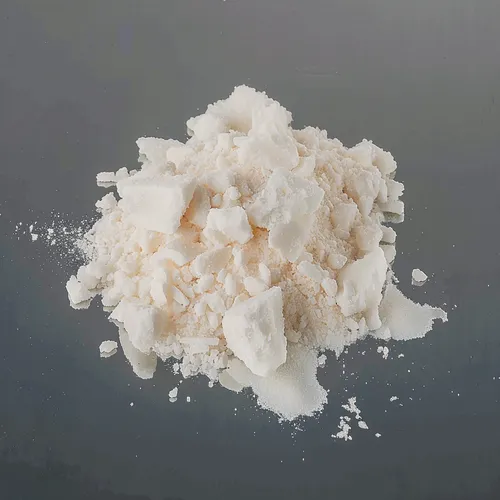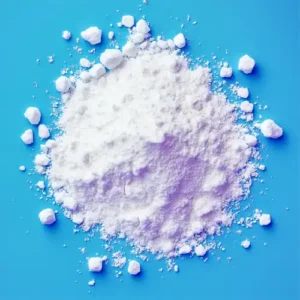The white crystalline powdered variant of cocaine known as cocaine hydrochloride is the most commonly used cocaine in the UK. Most often pure cocaine is adulterated with substances such as glucose or creatine, baking soda, talcum powder, flour or other anaesthetics like lidocaine. Generally, cocaine is supplied in vials, packets or wraps from plastic, aluminium foil or paper.
The methods of such cocaine intake in western countries most commonly include insufflations that is, the process of sniffing or snorting through the nasal passage whereby the cocaine enters the body through the mucous membranes. The cocaine hydrochloride is water soluble and therefore, any part that is not absorbed while being trapped in the mucous also finds its way through the body system by being swallowed easily.
You might have seen the white lines of this substance called rails or bumps on the hard surfaces like toilet seats or mirrors that form when the substance is sliced and chopped with sharp razors and then snored through the tubes called tooters. Many things that are available on the occasion such as rolled currency notes, drinking straws, casings of the ball pen and even long fingernails can serve as the tooters. The silver drinking straws that are commonly used for celebrity parties in London to avoid the lipstick from coming off to the drinking glasses also serve as the designer tooters when the need arises. The cocaine users also tamp the residue onto their fingers and rub it onto their gums for a more numbing effect as the cocaine also serves as a very powerful anaesthetic.
Freebase
The hydrochloride salts are a form of cocaine known as the freebase. Freebase is refined through a very complicated and dangerous process that involves highly explosive chemicals like ether. Freebase can only be smoked as it is insoluble in the water and therefore, cannot be inhaled, snorted or injected.
Crack Cocaine
Ready-to-use freebase is known as crack cocaine as it makes a cracking noise when heated for smoking. Ready-to-use freebase is produced by quickly heating the mixture of cocaine powder, water, sodium bicarbonate and ammonia. When cooled, the finished product forms small pellets of small hard rocks ranging from creamy white to beige in colour according to the purity and preparation of the cocaine. The product is then sold in small quantities of plastic bags or vials that contain enough cocaine for up to three inhalations. A glass tube pipe with a mesh or copper/steel wool attached to the bottom allows for the inhalation of crack cocaine. Even the soft drink cans with the pierced base also serve as use and throw smoking devices. The cocaine is heated with a flame, and the vapour is inhaled by the user. Cocaine can also be used in silver foils. Cocaine reaches the brain within a matter of seconds as it enters the blood stream through the lungs when freebase or crack cocaine is inhaled and thus produce a rapid rush and subsequent high.
Speedball
When the cocaine is taken by injection, it reaches the brain very quickly, almost within seconds. The powder is dissolved into the water, and the mixture is directly injected into the blood stream. It is also very popular among the addicted people to inject the cocktail of heroin and cocaine called the speedball. This makes a highly dangerous cocktail and many people, including celebrities like John Belushi and River Phoenix are implicated to have died due to this combination. During the smoking process, some of the vapours escape while others might not release due to underheating of the crystals and therefore, less potent than direct injection. On the other hand, in case of injecting the entire amount of cocaine enters into the blood stream.
Even though it’s not a common practice in western countries, but cocaine can also be taken orally. However, besides the intake of cocaine through the gum-line, some addicted people swallow the powder along with the paper wrapper called the snow bomb, and it is potentially the highest harmful cocaine usage. Traditionally still the indigenous people in the Andes chew the leaves and use coca tea to fight altitude sickness and relieve hunger. During the nineteenth century, the popular drink Coca-Cola was christened so because it contained liquid extracts of coca leaves and Kola nut that really contained cocaine. Still today, Coca-Cola the non-narcotic extracts of the traditional coca leaves.
Cocaine Drug Testing
All forms of cocaine can be detected by the use of cocaine drug testing kits, such as those sold by Zoom Testing.
The Dangers of Cocaine Use
Cocaine is a highly addictive stimulant drug with dangerous short-term and long-term effects. While many view cocaine as a recreational party drug, it poses serious risks to health and wellbeing.
Short-Term Effects
Even occasional cocaine use can lead to potentially fatal health consequences. Possible short-term effects include:
- Increased heart rate and blood pressure
- Heart attacks or strokes
- Seizures
- Overdose and death
Higher doses intensify these cardiovascular effects. When combined with alcohol, cocaine forms cocaethylene in the liver which further increases cardiac stress.
Snorting cocaine can damage the nasal passages over time. Injecting cocaine raises the risk of transmitting infectious diseases like HIV/AIDS and hepatitis if needles are shared.
Long-Term Effects
With prolonged use, cocaine can inflict lasting harm on both physical and mental health:
- Damage to the heart, liver, kidneys and lungs
- Malnutrition and weight loss
- Auditory and tactile hallucinations
- Paranoia, anxiety, erratic mood swings
- Increased risk of stroke and seizures
- Permanent damage to blood vessels in the brain
Additionally, cocaine is highly addictive. People who use it regularly can quickly develop a psychological and physical dependence. This makes quitting extremely challenging even when negative consequences are apparent.
The Addictive Power of Cocaine
Cocaine is an exceptionally addictive substance. While some users may initially perceive it as a recreational party drug, its potential for creating dependence is alarmingly high. The intense rush of euphoria from cocaine stems from a surge of dopamine in the brain’s reward circuits. However, this euphoric high is short-lived, leading users to crave more of the drug to recreate that pleasurable experience.
As dependence grows, users find themselves obsessing over obtaining and using cocaine, often at the expense of other aspects of their lives. The descent into addiction can be swift, eroding personal and professional relationships, financial stability, and overall wellbeing. Breaking free from cocaine’s grip becomes an immense challenge as the brain’s chemistry and neural pathways are profoundly altered.
Signs of Cocaine Addiction
Recognizing the telltale signs of cocaine addiction is crucial for seeking timely intervention and support. Some common indicators include:
- Frequent mood swings and irritability
- Dilated pupils and nosebleeds from snorting
- Erratic sleeping patterns and loss of appetite
- Engaging in risky or illegal behaviours to obtain cocaine
- Withdrawing from family, friends, and activities once enjoyed
- Continued use despite mounting negative consequences
If you or a loved one exhibits these warning signs, it’s essential to seek professional help from addiction treatment specialists. With the proper support system and comprehensive care, recovery from cocaine addiction is achievable.
Getting Help for Cocaine Addiction
The compulsive nature of cocaine addiction makes outside intervention necessary for many users. Evidence-based treatment options include:
- Inpatient rehabilitation programmes
- Outpatient counselling and therapy
- Support groups like Cocaine Anonymous
- Medications to ease withdrawal symptoms
Entering a professional treatment programme can increase the chances of achieving long-term recovery. Programmes provide a safe environment, medical supervision, counselling, peer support, and relapse prevention education.
With proper help and commitment, those addicted to cocaine can overcome their dependence. The first step is acknowledging the problem and seeking assistance from doctors, therapists and recovery organisations. There are many paths to sobriety for those caught in cocaine’s grasp.
Conclusion
While glamourised in pop culture, cocaine exacts a heavy toll on wellbeing. Even occasional use poses dangers, and chronic use often spirals into addiction. However, specialised treatment programmes can help people break free of cocaine’s hold and build a healthy drug-free life. With determination and support, recovery is possible.
Photo: “Crack Cocaine” by Anthony Cunningham for Zoom Testing
Zoom Testing is a leading UK drug testing company and a supplier of Drug Test Kits.





